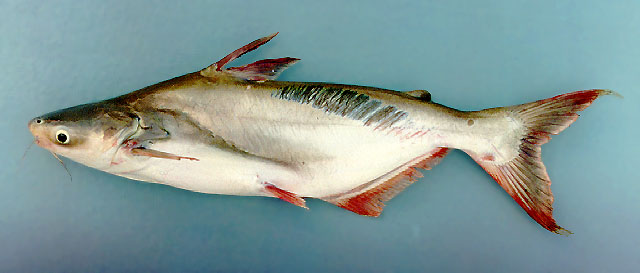| Pangasiidae (Shark catfishes) |
| 120 cm SL (male/unsexed) |
|
benthopelagic; freshwater, potamodromous |
| Asia: Mekong and Chao Phraya basins. |
|
Anal soft rays: 31-35. Body stout and heavy, head broader than long; blue-black dorsum; blunt snout with broad white band on muzzle; single large patch of vomerine teeth with separate patch of palatine teeth on each side (Ref. 12693). Rounded head and blunt rounded snout (Ref. 43281). |
| Known from large rivers (Ref. 12693). Found in rapids and also in deeper slower reaches (Ref. 37771). Enters flooded forest (Ref. 9497). Feeds on plants (Ref. 9497). Spawns at the onset of flood season and the young are first seen in June, averaging about 5 cm by mid-June. Marketed fresh (Ref. 12693). |
|
Least Concern (LC); Date assessed: 19 January 2011 Ref. (130435)
|
| harmless |
|
Known from the Mekong River. Undertakes upstream migration beginning in November when the water level within the river decreases and continues well into the dry seaon, at least until February. In the late dry season, or the start of the monsoon season, a downstream migration takes place from the Khone Falls to the Mekong Delta (Ref. 37770). Also Ref. 37770, 43281. |
Source and more info: www.fishbase.org. For personal, classroom, and other internal use only. Not for publication.

